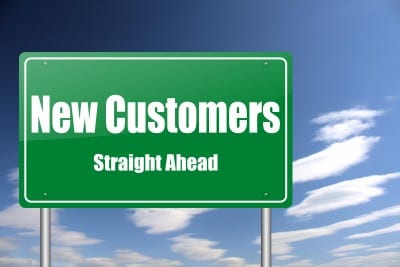 For field service organizations, time is the most precious resource. There are only a certain number of technicians to serve customers and generate revenue, and a finite amount of hours in a week to do it in.
For field service organizations, time is the most precious resource. There are only a certain number of technicians to serve customers and generate revenue, and a finite amount of hours in a week to do it in.
So, when a client is abusive to your staff, fails to pay on time, or makes impossible demands, it can create a substantial drain on your company’s time … and bottom line.
One solution is to “fire” the client, though it’s not an easy one — nobody wants to give up money or purposely create a potentially negative situation with a customer. So at what point does it make sense to pull the trigger? What factors should go into that decision? What’s the best way to do it, and protect your company’s reputation in the process?
Identifying the Warning Signs
The first step is to know what red flags to look for and address them early in the relationship, before a situation gets out of hand. Does the customer have unrealistic expectations requiring multiple call-backs and extra attention? Has the customer been abusive to you or your staff? Does the customer pay late? Does the customer demand large amounts of your time to prepare bids but rarely give you their business?
The temptation is to allow the situation to fester because it’s a big account or the customer might get angry. While these are legitimate concerns, take a step back to consider the havoc a difficult customer can wreak upon your company.
“A lot of people are afraid that, if they let a customer go, their business is going to fall apart,” says Keith Lowe, co-founder of Conditioned Air Solutions, a 28-person heating and air company based in Huntsville, Alabama, and an advisor to small businesses at Business is in the Details. “I’ve felt that, too. That fear. That apprehension. I understand. But at some point you have to ask: How much are we losing by trying to please this customer?”
Confronting the Customer
Once you’ve decided it’s time to meet with the customer, how should you broach the subject?
“When it comes time to renew a service contract [at Conditioned Air Solutions], if we aren’t making money with that customer, we’ll typically raise the price enough so that it’s either worth the hassle for us to keep doing business or they just go to someone else,” says Lowe. “So, in that sense, you don’t actually have to ‘fire’ them. And it’s usually the easiest way to do it.”
What should you say?
“Tell them, ‘We’ve been looking over our business and we’re simply not making enough money on our service to you. And if we’re not making enough money, we can’t keep our top people employed to provide you the level of service you require. So, we’re going to need to raise our price to make this work for all parties.’ More often than not, the customer will accept the higher price,” Lowe says.
But what if no amount of money is worth the hassle of dealing with that customer?
“There are a few customers who are abusive or unethical, or you can’t please them no matter what you do — that’s when you need to tell them to find a new company,” Lowe advises.
But do it tactfully and keep the communication positive, Lowe cautions. “Say something like, ‘We’ve been looking at our business, and we just don’t think we’re a good fit for the type and level of service you need. We’re not going to be able to make you as happy and deliver what you really need. So I recommend you try this other company.’”
Containing Any Fallout
What happens if a spurned customer takes offense? In a world of social media, where negative news can travel far and wide, within milliseconds, how do you protect your company’s reputation?
Lowe’s advice: “Remain professional and always keep it positive. If someone posts something bad about your company, post a response – but do it in a highly professional and diplomatic manner. Don’t get sucked into a back-and-forth argument defending your company. If the customer is spewing over-the-top negative comments about your company, it usually undermines that person’s credibility, not yours.”
The Bottom Line
When you confront a difficult client early in the relationship and with tact and professionalism, you’ll be in a better position to diffuse the situation before it explodes into a costly crisis for your company.
Related: Field Reps Have the Customers’ Ear – the Call Center Doesn’t.
Click here to download a free whitepaper, “Five Steps to Make Field Service Profitable.”

Share this: